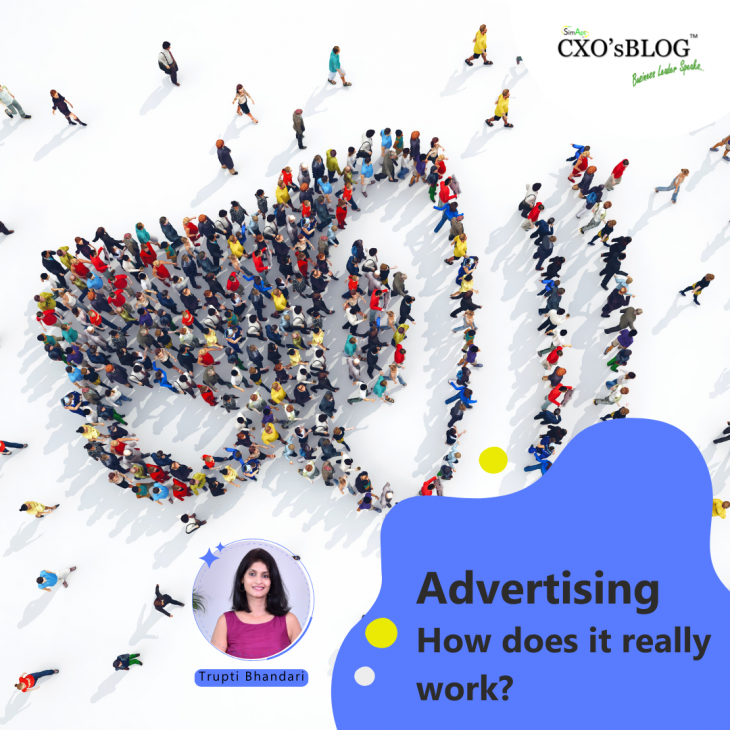Author: Trupti Bhandari
‘Advertising troubles both sociologists and financial directors: the former because they think it works, the latter because they think it does not,’ says Byron Sharp. The question of whether to advertise or not is especially a concern in today’s times when the results may not be seen immediately. Unfortunately, this can’t be directly measured since advertising has a long-term impact and the drop in sales is not immediately noticeable – over a period of time, it impacts a consumer’s ability to recall. Advertising works like the engines of a flight: while the engines are running, everything is fine, but when the engine stops, the descent eventually starts. The bigger the brand, the more it has to spend to appeal to a larger number of consumers across various occasions to keep a threshold recall for their market share to hold.
Also, continuous advertising refreshes, reinforces or builds the memory of the brand in the consumer’s mind, often subconsciously, and eventually nudges the consumer towards purchasing. On other occasions, it might just work to nullify the impact of competition.
There are a few subtle reasons why advertising works.
It builds stature
Consumers respect advertised brands when compared to those that aren’t. In fact, the premium charged by brands that are visible on TV and other media is usually recovered by way of higher consumer disposition to pay more for them, although they may enjoy no functional differentiation over the less visible brands. People also assume that if a brand has the power to advertise, it must be of good quality. Research also shows that people don’t believe the explicit messages that the advertisers capture, but decode a general message of quality. Over time, with usage and continuous message being deployed, consumers start to trust the brands as well.
Advertising also builds an image, which makes the products aspirational
For this reason, even luxury brands are advertised on mass media to build desirability in society so that those who can afford to buy them feel truly special in the eyes of those who couldn’t. This also creates a long list of potential consumers for premium brands. Those who want an Audi or BMW are far more than those who drive them, but these non-user consumers are not worthless.
Continuous, small-intensity advertising subconsciously pre- disposes the consumer to purchase.
Unfortunately, the gap between seeing a brand and purchasing its product defies all determinism, and this leaves advertisers with no choice but to be omnipresent and continuously seen. Use of a range of brand assets – brand colour, symbol, taglines, consumption visuals, topical messaging linked to call of action, brand ambassador’s associations, influencer and blogger reviews – all these help brand recall.
Considering the above, there is a pressing need for distinctiveness, which is to build a set of distinctive assets for the brand that are identification triggers in a crowd and which help to grab market share when the consumer is navigating the category. This helps attract the long tail of the light/occasional consumers who have a weak affiliation with the brand. But for this to happen, the brand should be consistently communicated across different platforms, and repeatedly. Digital marketing requires this even more as brand creatives multiply across various platforms.
Excerpt taken from the book Pragmarketism – pragmatic marketing insights for winning Indian consumers, by Trupti Bhandari and Arvind Bhandari.
Reproduced with permission from HarperCollins.
